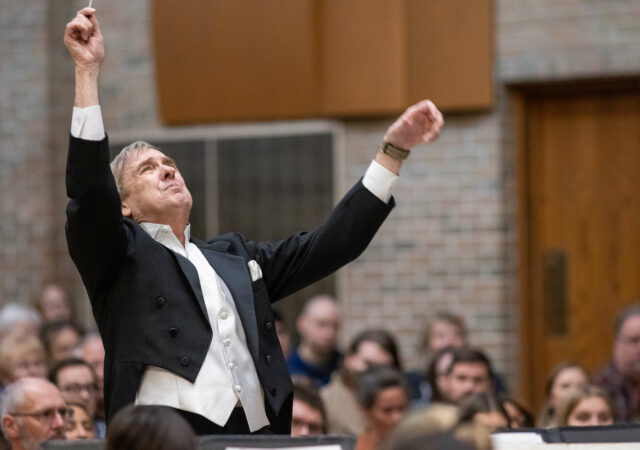WASHINGTON (RNS) — It took 83 years to build the iconic Washington National Cathedral, but a rare East Coast earthquake last summer took just seconds to send carved stone finials tumbling from the heavens to the ground below.
Now, six months after the 5.8-magnitude quake, the cathedral is facing repair costs of at least $20 million, and a reconstruction timeline that could stretch out a decade or more.
The bill to fix the iconic church is now at least $5 million more than original estimates, said church officials, who are still working to stabilize the building, repair its intricate stonework and raise money to continue the restoration.
So far, donations for repairs have reached $2 million, or 10 percent of the predicted cost.
“We can only do as much work as we have funding to do,” said cathedral spokesman Richard Weinberg. “If all the money is raised immediately, this is a five-year project. But that’s a big ‘if.’ It certainly could take up to 10 years.”
The reconstruction effort involves both massive cranes and hand-held chisels, and the kind of expertise that’s not found on a typical construction site. The quake toppled a grand pinnacle from the cathedral’s central tower. Finials, at the tops of the pinnacles, rained to the ground. Flying buttresses cracked.
Donations have come from more than 3,500 people across the country for the cathedral, the sixth-largest in the world and the mother church of the Episcopal Diocese of Washington.
But the cathedral is also dubbed a “House of Prayer for All People,” and serves as official as a church can be in a nation that separates church and state.
Weinberg said the cathedral is “cautiously optimistic” that goodwill from within and outside the denomination will sustain restoration efforts, which are headquartered in a shop on the cathedral’s grounds that looks as if it could be a garage for a hefty pickup truck, but nothing bigger.
There, two stone carvers employ techniques that are largely unchanged from those used by the craftsmen of the great European cathedrals of centuries ago. On a recent weekday, Andy Uhl, who has been carving stone for 25 years, chiseled grooves into a microwave-sized block of Indiana limestone.
Guided by Uhl’s hand, the chisel is powered by compressed air. But when it comes to shaping the contours of an angel’s nose, or a gargoyle’s ear, he and colleague Sean Callahan reach for an old-fashioned chisel and mallet.
Callahan, with a mask over his mouth and plugs in his ears, works surrounded by chipped and pocked finials, all victims of the earthquake. Some of them include a few that he worked on a quarter century ago as an apprentice.
When the quake hit on Aug. 23, Callahan was in the shop, and thought he was having some sort of inner ear problem when the earth began to move beneath his feet. As one of the first people atop the towers after the earthquake, he said the extent of the damage astounded him.
“It’s a lot worse up here than it looks on the ground,” he remembered thinking.
The cathedral and the Washington Monument — the two highest points in the capital city — suffered the most damage when the quake struck. Tourists could suddenly hear the cathedral’s bells ringing as the building swayed.
Church officials and police evacuated the cathedral, found no injured employees or visitors, and began assessing the damage. There is no insurance to cover the damage.
Since then, the church has reviewed its insurance policies, Weinberg said, but made no changes to cover earthquakes. The deductible and premiums to insure a cathedral are prohibitively high, he added, and damaging earthquakes in Washington, D.C., are rare.
The fundraising drive began almost immediately, and an early $25,000 gift from the Catholic Archdiocese of Washington helped draw attention to the cause. Soon after, a crane used for the repairs toppled over on the cathedral grounds, injuring no one seriously but scuttling plans for a televised concert with President Obama to commemorate the 10th anniversary of the 9/11 attacks.
Within weeks, tourists returned to the cathedral and services resumed. Today, scaffolding crowns the central tower and the interior nave is draped in black netting to protect visitors from loose mortar. The cathedral’s challenges are mostly unseen as it tries to remind its admirers that it needs money.
In the years leading up to the quake, the cathedral battled budget problems and suffered through several rounds of layoffs. Since the earthquake, donors have contributed $5 million for cathedral operations and ministries, but the church says it needs $5 million more to support its annual programs.
“We have a very long way to go,” said the Rev. Francis H. Wade, the cathedral’s interim dean. “But this humbling generosity has allowed us to stabilize our building and return to our mission of serving as the spiritual home of the nation.”
— Lauren Markoe
© 2012 Religion News Service. Used with permission.
Posted March 7, 2012




